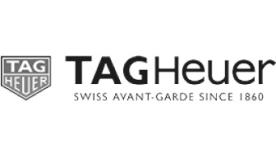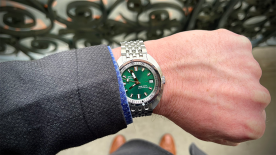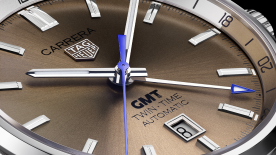In your opinion, how is the Swiss watch industry currently positioned?
It has racked up yet another successive record year since 2010, even though this year the 2014 figures were only 2.8% higher than the first semester of 2013. Achieving further growth on the back of a historic record remains an amazing performance in itself! Nonetheless, these figures reflect an average but not the fragmentation of the watchmaking scene that we are currently witnessing, amid which certain brands are doing very well while others are taking a knock. In my opinion, it is mainly the big groups that are benefiting from this growth. The strong get stronger, while the artisans and the smallest firms are becoming more vulnerable. And when I talk about groups, I don’t just mean LVMH, Richemont and Swatch, but also Patek Philippe and Rolex. Each one of them is worth more than a billion Swiss francs. I think that these corporations must represent something like 85%, maybe even 90% of watch exports, meaning nearly CHF 20 billion out of the 22 billion-plus annual turnover achieved by the watch industry as a whole.
Do you think a small brand still has a chance of surviving today?
With great difficulty! Brands today must become global, and those that confine themselves to just a few markets in a globalised market are really struggling. This even applies to niche brands, because niches are getting smaller and smaller. These very peripheral slots tended to attract a very particular profile of consumers from Asia, Eastern European countries or the Middle East, who bought things that were essentially rare and expensive, but the latter are now adopting more rational behaviour and some of their buying power is going on brands that are technically advanced yet fully recognised, such as Patek Philippe, Vacheron Constantin, Lange & Söhne, Blancpain and others. Compared to individual artisans whose eponymous brands run the risk of disappearing with their creator, these brands represent sustainable values and offer after-sales service as well as greater guarantees of still being around in a few decades. It used to be said that “a 100 million-franc turnover gives you a worldwide profile”, but for my part I think that the global existential threshold is currently at around 500 million. So effectively you need a presence in 50 countries, or in other words, sales amounting to 10 million per country, which is not much for countries such as China, the USA or Japan. If we are to believe the watchmaking ranking produced by Bank Vontobel, there are just 18 Swiss watchmaking brands whose annual sales exceed CHF 500 million. So that’s my view of the market.
What winning assets does Hublot have up its sleeve in comparison to its competitors?
Hublot is decidedly different, a one and only brand. Firstly, our message is offbeat because we combine extremes, such as tradition and futurism, gold and carbon. This is an advantage for some consumers but a handicap for others, because the perception of luxury varies according to generations and cultures. Our disruptive communication is very appealing, not only to new generations, but above all to successful athletes, rappers and entrepreneurs as well as young millionaires who walk around in jeans and sneakers while wearing a distinctive watch. Aside from anything else, we are frontrunners in many areas, and the very fact of being first, different and unique gives you a great hand of cards. Even if not everyone likes them, these advantages strengthen the brand. Elements such as these position Hublot in a positive dynamic, and in a sphere of influence which is attractive. The brand moves and makes things move which is a huge advantage, because it is always ahead of the game. In parallel, our existential philosophy is based on innovation, which accentuates this seductive, eye-catching effect. We attract attention through innovation and our reputation increases. Hublot’s innovative ability gives it an enormous advantage over its competitors, who also innovate but not at the same rate. Other than these differentiating elements, we have an ultra-modern Manufacture, in which the oldest machines date from 2008, and which has one of the industry’s rare metallurgy departments. We are in many ways similar to a high-tech F1 workshop, which enables us to capitalise on our uniqueness in production as well as in other respects.
Have you been able to measure the impact of the football World Cup that you sponsored?
Definitely, especially since we were already the timekeepers at the Euro in 2008, the World Cup in 2010 and the Euro in 2012! The famous Hublot ‘fourth official’ board is therefore appearing for the fourth time. And the FIFA World Cup is none other than the number one televised event worldwide, ahead of the Olympic Games and the European Cup, the third most important. We have sponsored the first and third greatest events televised in the world twice! The returns are huge! Even if this does not immediately translate into watch sales, it increases brand awareness and it is obvious that a well-known brand has more chance of selling watches than an unknown brand. Do you realise that the World Cup in South Africa was watched 36 billion times for example, and its Brazilian counterpart 40 billion. So people saw Hublot 40 billion times for an average of 25 seconds per match – that is enormous!

You are also responsible for the Zenith and TAG Heuer brands – to what extend are you involved with them?
I am mainly involved in the operational strategy because that’s what determines the numbers. If I were happy just to keep an eye on the figures I would be a somewhat passive leader. I could say for example “the numbers are not good”, but I wouldn’t be able to explain why. I prefer acting at source level, where the brand is made: the product, the organisation and the marketing. At this level, I am intensely involved because if we get it right, the numbers will automatically follow. In this respect, I am a somewhat different director of the LVMH watchmaking division because I am very hands-on and I sometimes make waves, because my experience forces me to ask a lot.
What does the Grand Prix d’Horlogerie de Genève represent?
It represents an unparalleled opportunity and derives great value from its participants, so everyone should take part. This could be an amazing promotional platform for Geneva, Switzerland and watchmaking.
Interview published in Comptoir Immobilier magazine (October 2014).








